Narito ang ilan sa mga isda at lamang-tubig na madalas nating makita sa mga palengke sa Pilipinas ayon sa kanilang karaniwang pangalan. Bawat rehiyon o bayan ay may kanya-kanyang tawag sa mga isda at lamang-tubig o lamang-dagat na ito kaya't ipinakita din dito ang katumbas na katawagan sa mga isda at lamang-tubig na ito sa wikang Ingles gayundin ang Scientific Name ng mga ito upang mas madali natin itong makilala.
The Philippine coastal environment with its extensive shoreline, marked by mangrove areas and river connections, coral reefs and seagrass communities has been known to harbor a great variety of fishes. Interestingly, the largest and smallest fishes in the world are found in the waters of the Philippines. The variety of fishes, so far identified, has been recorded to comprise 2,400 species (Herre, 1953) which have been given different names by region and by major dialects.
There lies some confusion in the use of common names because there are cases where a certain common name refers to different kinds of fishes. This can lead to misidentification and therefore affect the correct accounting of specific fish catch, as well as total production. A reference book entitled “English and Local Names of Philippine Fishes” published in 1948 by Dr. A. W. Herre and Mr. Agustin Umali has been truly helpful in identifying and classifying fishes in the catch reports coming from the different fishing grounds of the country. It has helped identify many fishes for various purposes. While this reference is still useful, an updated one is needed because of recent notable new names adopted by coastal fishermen.
This observation is supported by the absence of some names in the old reference list and which are presently in use. In general, the common names of fishes by major dialects are mostly generic or by groups, like for slipmouth, sapsap is the common name for all kinds in Metro Manila, tambong in Calauag, and pot-pot in Cebu. Interestingly, there are specific common names for various species in the group that possess distinct external characteristics, like its color, body shape and presence of filaments. This is also true in the coral reef fishes like the groupers and the snappers.
Gabay sa Inyong Pamamalengke
(Market Guide to Common Fishes in the Philippines)
Kung ako ay katulad mo na hindi rin masyadong pamilyar sa mga isda at lamang-dagat na makikita sa palenke, narito ang ilan sa mga larawan na maaring makatulong sa inyo. Kung sakaling iba ang local na pangalan ng mga isda at lamang tubig na naipakita dito, maari lamang na isulat ninyo ito sa comments section bilang dagdag na impormasyon o di kaya ay maitama.
Karamihan sa mga pangalan na nabanggit ay mga katawagang local sa Bisaya o Binisaya.
Tulingan (Bullet Tuna)
Tinatawag ding Gulyasan. Nasa gitna ito ng Tambakol (yellow fin tuna) - Gulyasan ( mackerel tuna) - Tulingan (skipjack tuna) sa laki. Tabakol pinakamalaki at tulingan pinakamaliit.
The bullet tuna, Auxis rochei, is a species of tuna, in the family Scombridae
See Also: Sinaing na Tulingan sa Sampalok - Pina-simpleng Pinoy Recipe [Ulam na Madaling Lutuin]
Budburon o Galunggong (Mackerel Scad)
Tinatawag ding isdang Galunggong. Ang galunggong (Ingles: big-bellied round scad) ay isang uri ng isdang may malaki at mabilog na katawan.
The mackerel scad (Decapterus macarellus), or speedo, is a species of fish of the family, Carangidae. Galunggong or Mackerel Scad in English is common in the Philippines but this fish is quite abundant and can be found mostly on subtropical islands
Anduhaw (Mackerel)
Alumahang bato kung tawagin sa ibang lugar.
The Atlantic mackerel (Scomber scombrus), also known as Boston mackerel, Norwegian mackerel, Scottish mackerel or just mackerel, is a species of mackerel found in the temperate waters of the Mediterranean Sea, the Black Sea, and the northern Atlantic Ocean
Bangus (Milkfish)
The milkfish (Chanos chanos) is the sole living species in the family Chanidae. The milkfish can grow to 1.80 m (5 ft 11 in), but are most often no more than 1 m (39 in) in length. They can reach a weight of about 14 kg (31 lb). and an age of 15 years.
Tilapya (Cichlid Fish / Freswater Fish)
Tilapia is the common name for nearly a hundred species of cichlid fish from the coelotilapine, coptodonine, heterotilapine, oreochromine, pelmatolapiine, and tilapiine tribes (formerly all were "Tilapiini")
Bolinao o Bulinaw / Dilis (Anchovy)
Tinatawag ding Bolinao na itim; Dilis; Tige, Tornos, Libod.
Called bolinao among the Cebuanos, anchovies are enjoyed in the Visayas region in various ways.
Morong / Dalagang Bukid (Yellowtail fusilier)
Tinatawag ding Dalagang bukid, Buglawan (Redbelly yellowtail fusilier)
Mansa / Baliling / (Trevally Fish)
Tinatawag ding Talakitok, Langog, Panit, Sibong baliling, (various trevally species)
Maya-Maya (Red Snapper)
Bambangun (Two-spot red snapper) / Timbugan, Lugho (Checkered snapper) / Maya-maya (Emperor red snapper)
Correction: may be one of the Indo-Pacific "red" snappers such as L. timorensis instead (Note that L. campechanus has been used in some local fisheries papers) - comment by Kent Sorgon
Mangsi (Flying Fish)
Tinatawag ding Borador, Iliw, Bangsi; Barungoy (Short-nosed flying fish) / Bansi, Barongoy, Calereon; Calarion (Small-scaled flying fish)
Kitong, Pagatpaton, Danggit, Samaral (Rabbit Fish)
Samaral; Danggit, Manaring, Barangen, Danggit balawis (Sandy spinefoot, Goldlined spinefoot, Streaked spinefoot, Goldenspot spinefoot, Vermiculated spinefoot)
Bilong-Bilong (Moonfish)
Bulan-bulan; Chabita; Birao-birao; Sapatero, Cadiz, Habita, Chaleta, Hiwas, Salamin-salamin, Belong, Timon-timon; Kutaw, Kutao, Dalupane, Tabas; Bandurya; Konan, Barung-barung; Buwan-buwan, Tabas; Sipol, Chabita; Pagalungan; Belong-belong, Bulan-bulan
Possible Correction (Scientific Name): Mene maculata
Budlisan (Barracuda)
Other local name for different Barracuda species: Penyosa, Torsilyo, Danutok, Babayuti, Batig, Bulios, Rumpe, Mangalo, Bansay, Manabang, Titso, Bansa, Lansang-lansang; Tonong-tonong, Bat-od; Bat-og, Laba-laba; Tabangko; Dobla-dobla; Rompe; Rumpe kandado, Ausod; Lusod, Alho, Lambana, Pangaluwan, Asogon
Timbungan (Goat Fish / Striped Red Mullet)
Other local name for different Goatfish species: Saramulyete, Ikik, Agingoy; Tia, Arikiik; Gurayan, Timbungan hunasan; Hinok, Timbungan bongol; Aluman, Salmonete, Tambud; Bolaw
Sasa (Barred Garfish)
Other local name for different Garfish species: Suasid (Black-barred halfbeak), Suasid; Sasa (Ribbon halfbeak), Sa-sa o Soroy (Three-by-two garfish), Iman (Quoy’s garfish), Kansusuit or Bugiw (Quoy’s garfish)
Tangigi / Tanigue (King / Spanish Mackerel)
Other local name for Spanish mackerel: Tangigue, Tangigi, Taniguing batang, Tanigue
Correction on Scientific Name: (Scomberomorus commerson)
Tamban-tuloy (Herring Sardines)
Other local name for Sardines: Lilang; Tamban; Taminsot; Tabagak; Lupoy;Tolisok; Guno, Malangsi; Makahilo Hawol-hawol, Lapad; Aber, Bilis; Lao-lao, Tulis, Tansy; Malapmi; Malapne; Salinyasi; Law-law; Turay; Lupnos, Tabagak,
Barilis / Tambakol (Yellowfin Tuna)
Other local name for Yellowfin Tuna: Oriles, Tiklaw; Vahuyo, Tambakul, Tambakol, Panit, Malaguno, Kikyawon; Bankulis; Bronsehan, Bantala-an, Tulingan, Baliling, Carao, Pala-pala, Pirit; Karaw; Pak-an, Panitto (Barelis)
Tamarong (Blackfin Scad)
Other local name for various Scad Fish: Mat-an; Tamarong, Baculan, Malapati; Marambakon, Budburon; Burot-burot, Lison; Karabalyas, Galunggong; Kutob; Matangbaka, Budlatan
Potpot o Sapsap (Ponyfish)
Slipmouth or sapsap is the common name for all kinds in Metro Manila. Other local name for various species of ponyfish: Lawayan, Tigas, Bagsang, Talibukno, Sap-sap maelol, Sap-sap mabeng, Sap-sap betsang, Lalakasen, Miralla, Taksay, Waling, Tambong, Palipad hangin; Tambong laot, Tambong hubad, Dalupani, Tambong aso, Haba-tambong, Barurog, Lawayan, Tabilus
Katambak (Bream)
Other local names for various species of Breams (Emperors Large-eye breams & Pigface breams - (Gymnocranius spp.; Lethrinus spp. & Monotaxis grandoculis): Bag-angan; Kirawan; Dugso, Sapingan; Gambayan; Bagangan, Maydak; Mayasang; Pangaytan; Dolso;Babaan; Mataan, Petilya, Bukawin; Bukawin gulat; Dugso; Bukawin dugso; Kanuping; Bitilya; Bukawin bilog; Bukawin gulat, Porgy; Bitilya, Bulian; Dugso, Putotan; Madas tambak; Madas manama; Maligmis, Pangali-lin; Morduwal, Bukhawan; Manuping; Malagaas; Saligan; Dugso; Kamasuhon; Manlagaas; Bukhawon; Bukawon, Kilawan, Dugso; Bunggoh, Bag-angan, Kirawan, Botelya, Hunas balo; Lanso;Kutambak; Kutambak tilos; Kutambal piring
Malasugi (Swordfish (Sailfish) / Blue Marlin)
Other local names for Blue Marlin (n (Makaira mazara)) / Sailfish Species: Manombok, Bigok, Manumbok, Dugho, Wahoo, Lip-lipan, Marlin
Swordfish (Xiphias gladius): Bigo; Big-ho, Bigok, Sibingan, Palmbela; Malasugue
Lapu-Lapu / Pugapo (Gouper)
Grouper (Epinephelidae) are called Lapu-lapu in Tagalog, Inid in Hiligaynon, and Pugapo in Binisaya.
Other local names for Groupers (Epinephelus spp.; Plectropomus spp.; Anyperodon sp.; Variola sp.; Cephalopholis spp.; Cromileptes sp.; Ellerkeldia rubra): Kurapo, Valenten; Mahang; Anid; Pakes, Kigting; Sigapo; Tiny; Bokbok; Tangka; Baraka; Uwak-uwak; Puol; Señorita; Sibungin may lawi; Talbusan; Sibungin, Garupa; Señora, Bulong, Bagahak, Bulang; Panter; Alteng, Pogapo; Baraka; Rana; Bulgan; Banulog, Inid; Liglig; Pugaro, Sudlay-sudlay, Pugapong gamay; Pugapong tiger suno; Pugapo salapok; Pugawo; Pugapong badiangon; Milo-milo; Panter; Sunong lawihan, Tingag;Kugtong; Baraka; Biason; Baghak; Bantulon; Pugapo; Mero-mero, Tingag, Kulapo; Mantis;Kulapo sunoh; Kulapo kuhatong; Kulapo bugog; Kulapo kut-kut;Kulapo abuh, Langogan, Kulapu bagahak; Kulapu kot-kot;Kulapo kubing
Salmon (Threadfin Salmon / Fourfinger threadfin)
Eleutheronema tetradactylum - English: Fourfinger threadfin - Local Name: Tabarara, Mamale, Bungot; Buka-dulce, Kugaw, Banakon, Boka dulse, Tigi, Bukadolse
Fusilier (Caesio spp.) / (Pterocaesio spp.): Salmon; Buraw-buraw; Ulan-ulan; Sulig
Hito / Ubod / Kasili (Eel)
Anguilla australis - Shortfin eel - Kibo {Ibanag} / Ubod-ubod
Anguilla bicolor bicolor - Indonesian shortfin eel - Igat
Plotosus canius - Gray eel catfish - Hito
Arius spp. - Sea catfishes - Hito
Gymnomuraena zebra - Zebra moray - Ubod
Gymnothorax ocellatus - Blackedge moray - Ubod
Gymnothorax sp. - Morays - Ubod; Panangitan
There are so many other species of Moray called "Ubod)
Alimango (Mud Crab) / Alimasag Sea Crab)
Nukog or Pusit (Squid) / Kugita or Pugita (Octopus)
See Also:
Pasayan or Hipon (Shrimp) / Sugpo (Prawn)
Seashells - Talaba, Saang, Tahong, Kinhason
Seaweeds / Seagrapes - Lato, Lukot, Guso
Tuyom / Swaki (Sea Urchin)
Erratum:
There might be scientifically misidentified fishes in the album. The red snapper IDed as Lutjanus campechanus may be one of the Indo-Pacific "red" snappers such as L. timorensis instead (Note that L. campechanus has been used in some local fisheries papers). The local name "Katambak" included images of a snapper and 2 porgies, but the ID Abramis brama refers to a freshwater cyprinid (which is also called a bream). They also use Xiphias gladius to refer to two actually different species: X. gladius and Istiophorus (maybe I. platypterus). The ID Scomber scombrus is also misapplied because it is an Atlantic species.
Further Reference:
Fisheries Resources Evaluation and Environment Services Division
Bureau of Fisheries and Aquatic Resources
Mga Nakakatawang Pangalan ng Isda
Cory
Noong 1986 snap election, sumikat ang isdang galunggong ng gamitin ang presyo nito sa campaign ad ni Corazon Aquino - na umabot sa 30 Pesos per kilo noong panahon na yun - upang ipakita kung gaano kahirap ang buhay noon sa panahon ni Presidente Ferdinand Marcos.
Dahil dito tinawag na "Cory" ang isdang Galunggong ng mga nagtitinda ng isda noon.
Imelda
Noong simula ng 1980s, may isang isda na sumikat dahil sa programa ng gobyerno na magbigay ng muran at masustansiyang isda - ang bighead Asian grass carp.
Mabilis na tinawag itong Imelda, dahil ito ay ipinakilala nya pagkatapos ng matagumpay na pakikipag negosasyon niya sa bansang Tsina.
Gloria
Isa itong bagong species sa ating mga palengke - ang black-chin tilapia - na kung tawagin a Gloria - dahil may pagkakahawig daw ang itsura nito kay dating Pangulong Gloria Arroyo.
Biyang Pukpok
Ang Biya (Goby) ay isdang makikita sa mga lawa sa Pilipinas. Ngunit may tinatawag na "Biyang Pukpok) - dahil ang ulo nito ay mukhang napukpok ng martilyo.
Kamot Pusa
Pangalawa lamang sa kasikatan kumpara sa Manila clam (halaan), ang "Kamot-Pusa" ay kilala at tinawag na ganito dahil sa mga tila kalmot sa shell nito.
Tampal-puke
Ito ang itinawag sa isdang ito na kasinlaki lamang ng palad ng mga lalake. Hindi bastos ang pangalan na ito at karaniwan pa nga ginagamit sa ibat-ibang palengke sa Pilipinas.
Good to Know
Sardinella tawilis, freshwater sardine or locally known as the tawilis, is the only known freshwater sardine and is endemic to the Taal Lake in the Philippines. Known as a heritage food, they are a popular delicacy in the Philippines and are classified as an endangered species.
The International Union for Conservation of Nature (IUCN) listed Sardinella tawilis as endangered on February 28, 2017, as its population declined by at least 50% over the past 10 years due to improper fishing practices and the introduction of invasive species like tilapia in the lake. To prevent the extinction of this species, the Bureau of Fisheries and Aquatic Resources enforced a closed fishing season in Taal Lake. A three-month fishing ban was proposed to let species spawn and increase their population. Projects on the conservation of the species have been done for years. Last 2019, the enforced closed fishing season made the Department of Environment and Natural Resources (DENR) urge the locals to report establishments and restaurants that are selling tawilis. The conservation of Sardinella tawilis is essential in fish feeding biology studies as it can provide a better understanding of the trophic relationships among the different species in aquatic ecosystems and is beneficial in the estimation of trophic levels which can serve as a tool in understanding complex coastal ecosystems. Because of the habitat of the species near the Taal volcano, conservation studies for this endemic species is essential to save them from possible extinction when an eruption may occur.
Facts about the Sardinella tawilis:
- S. tawilis is believed to be one of the former marine organisms that evolved into freshwater species following the changes in the waters of Taal Lake.
- This sardine reaches up to 15cm and weighs no more than 30g.
- It was first described in 1927 as Harengula tawilis.
- Its closest genetic relative is Sardinella hualiensis, which shares the same morphology as S. tawilis.
- It breeds all year round and lays eggs during the months of March to June as the water temperature is high.
- S. tawilis feed mostly on zooplankton and small crustaceans.
- It is the only fish species from Clupeidae family that live in freshwater.
Tawilis Taxonomy:
The tawilis is part of the genus Sardinella and the family Clupeidae, which includes many other important fishes caught or farmed for food, such as sardines, herrings, & shads. It also belongs in order Clupeiformes which includes anchovies and is a ray-finned fish (Actinopterygii).
Threats to the Tawilis species:
According to the International Union for Conservation of Nature (IUCN), some of the biggest threats to S. tawilis are overexploitation through overfishing, pollution, and competition with introduced species brought by aquaculture. Harvest of the species has been declining since 1998 due to the use of illegal fishing methods. In 2019, a closed fishing season was implemented in March and April, which are the months that tawilis are known to spawn. Most fishermen obeyed but some still persisted. The offenders’ reason is that tawilis sells for more money compared to other fish. The National Fisheries Research and Development Institute (NFRDI) attributed this to the lack of access to information and support from the local government units of the tawilis fishermen.
_________________________
Tawilis Source and References:
Buhay Batangas. (2018, March 2). The Mystery of the Tawilis’ Origin and Its Transformation from a Marine to Freshwater Fish. Batangas History, Culture, and Folklore.
Cabico, G.K. (2020). Saving Taal Lake, preserving the endemic tawilis. Philstar.com. Retrieved
November 30, 2021
Lontoc, J.F.B. (2019). IUCN red-listing of tawilis reveals advocacy of Philippine scientists. University of the Philippines. Retrieved from https://up.edu.ph/iucn-red-listing-of-tawilis-reveals.../.
Magsino, Richard. (2012). Feeding biology of Sardinella tawilis in Taal Lake, Batangas. ResearchGate.
Whitehead, P. J. P. (1985). An annotated and illustrated catalogue of the herrings, sardines, pilchards, sprats, shads, anchovies, and wolf herrings; prepared by peter J.P. Whitehead. Clupeoid fishes of the world (suborder Clupeoidei). Chirocentridae, clupeidae and pristigasteridae (Vol. 7). United Nations Development Programme. ISBN 92-5-102340-9.
Santos, M., Munroe, T.A., Di Dario, F., Hata, H., Torres, F. & Quilang, J.P. (2018). Sardinella tawilis. The IUCN Red List of Threatened Species 2018: e.T98836352A98886655. Downloaded on 27 November 2021
Slow Food. (2018, December 9). Tawilis. Slow Food Foundation for Biodiversity - Ark of Taste. Retrieved November 27, 2021.



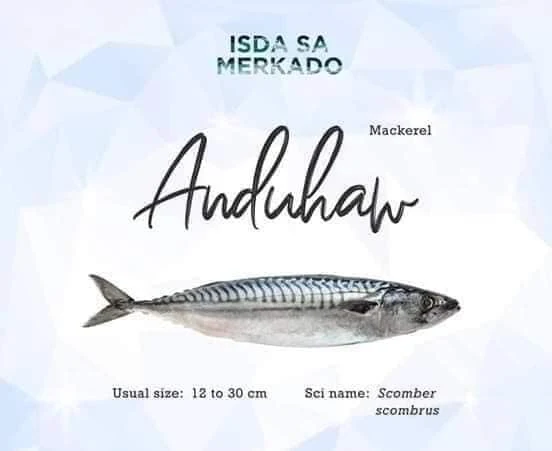










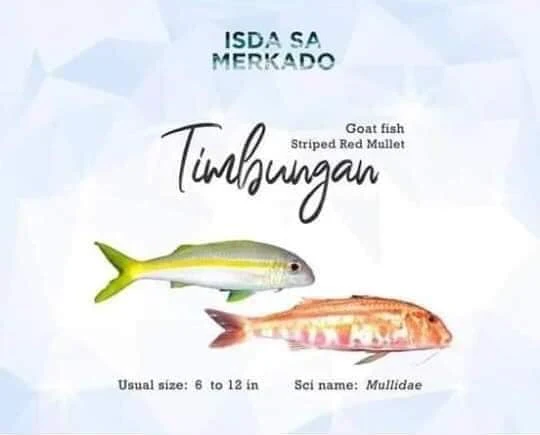



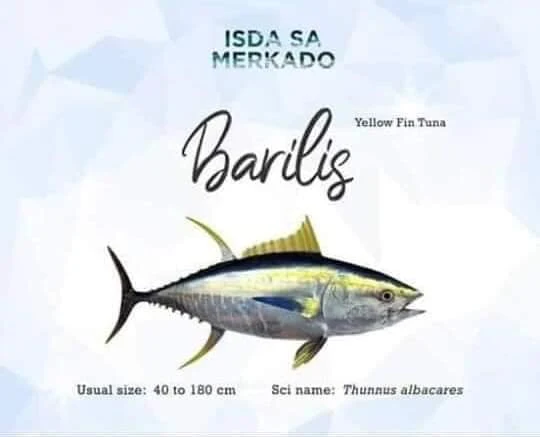

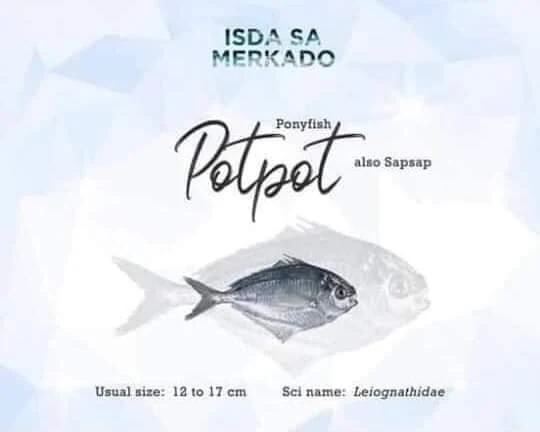


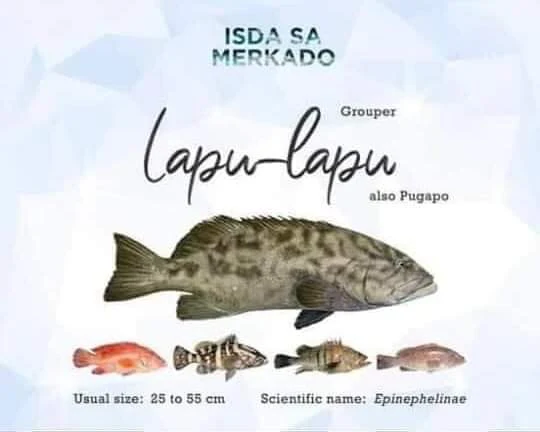
















1 comment:
Hi. Hope this message finds you well. First, I appreciate your content, but I noticed that some of the picture and scientific name or information in general aren't right. As I am one of the fisheries technologists, I would know the difference. Anyway, I'm not writing these to critic the work you have done. Furthermore, to make you feel wrong. I just want to express my opinion as one of your viewers and appreciate your work. I hope you find this message in the positive way. Those facts are truest and used in the right way.
Have a very good day. Stay safe and healthy.
Thank you.
Got Something to Say? Thoughts? Additional Information?